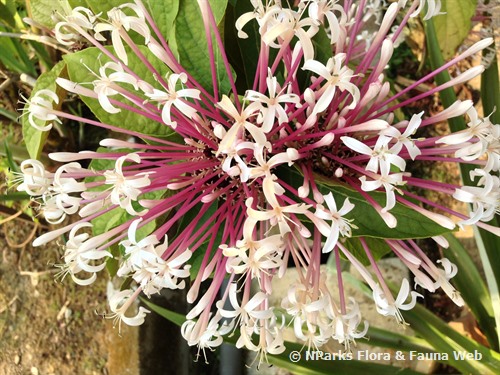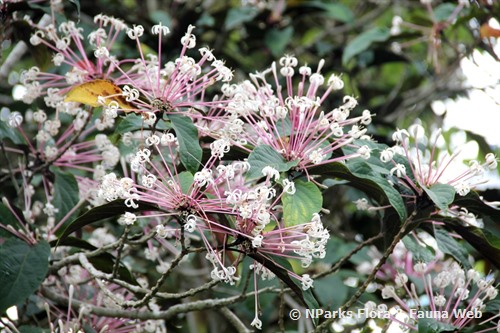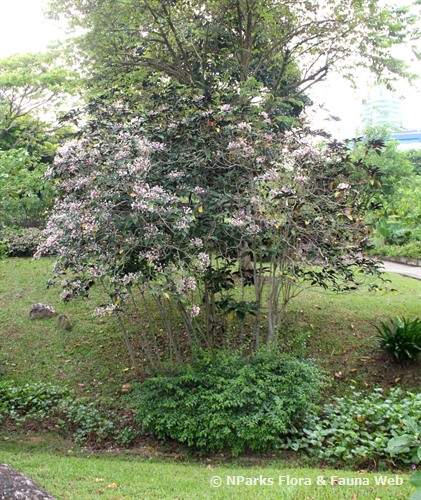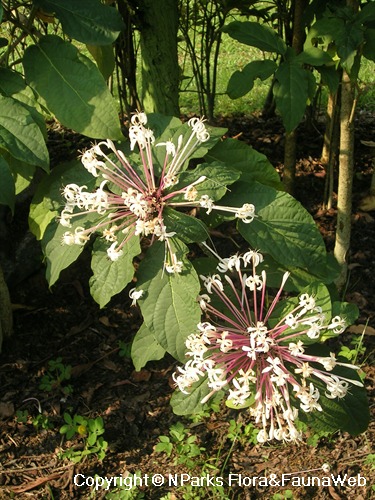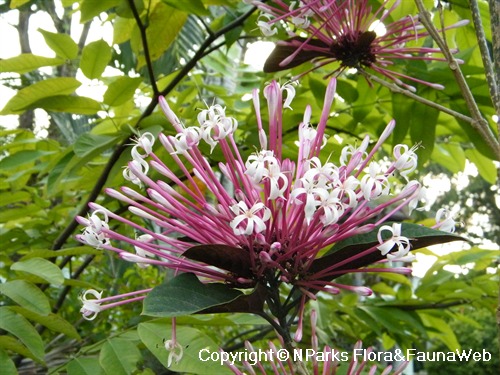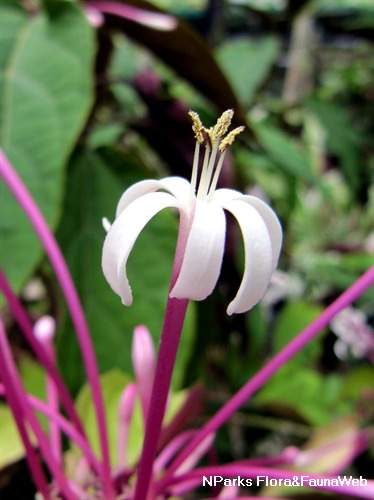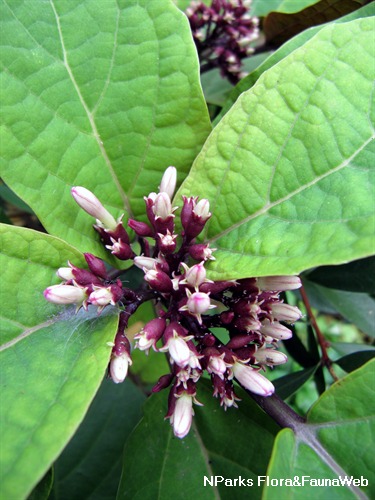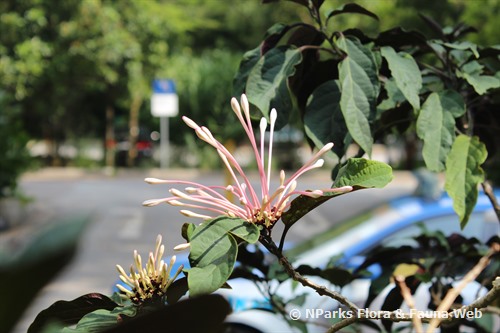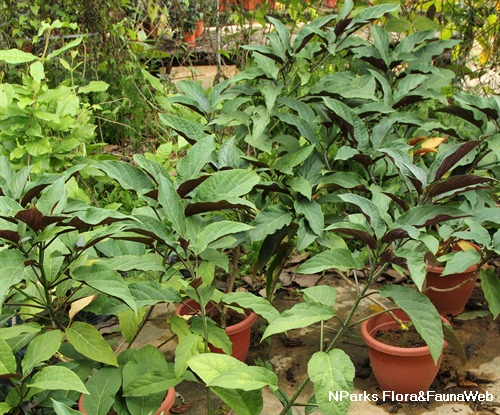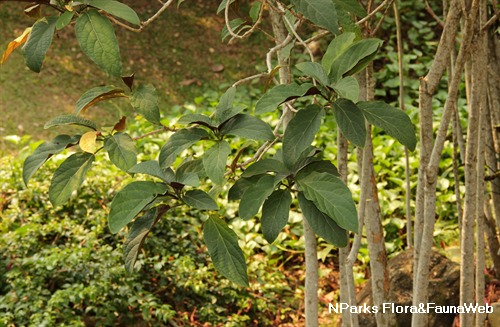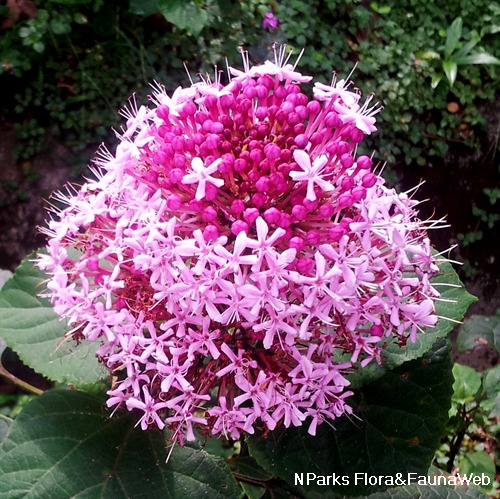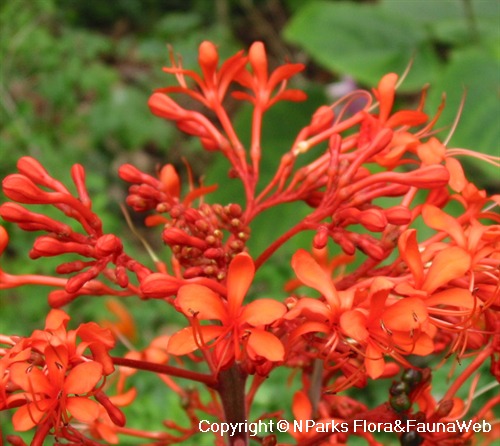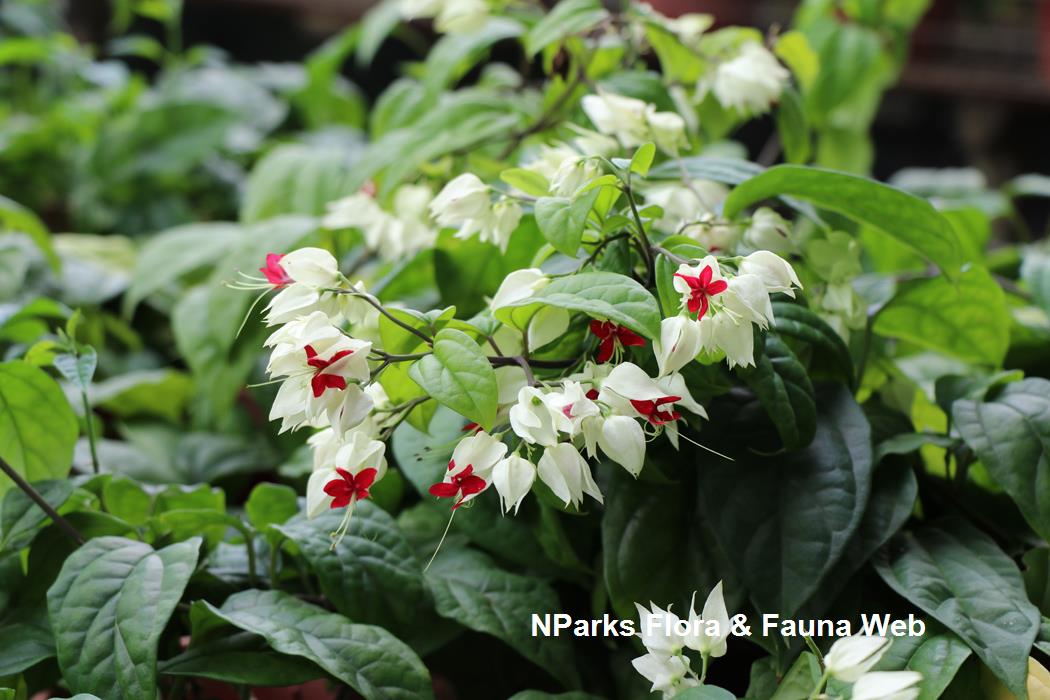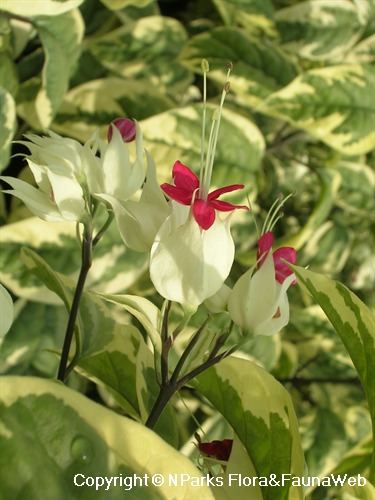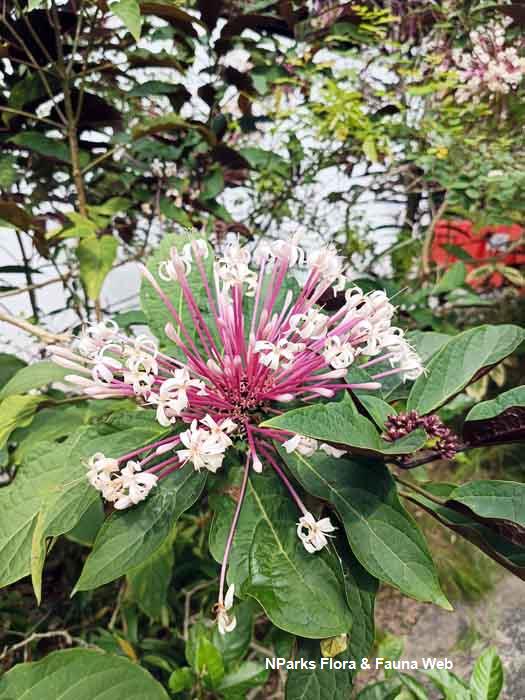
Back
Clerodendrum quadriloculare
| Family Name: | Lamiaceae (Labiatae) |
| Common Name: | Quezonia, Starburst, Shooting Star, 烟火树 |
21 Nov 2025 (James/Pauline) added species growth rate, marked as moderate
Name
Classifications and Characteristics
| Plant Division | Angiosperms (Flowering Seed Plants) |
|---|---|
| Plant Growth Form | Shrub |
| Mode of Nutrition | Autotrophic |
Biogeography
| Native Distribution | New Guinea, the Philippines |
|---|---|
| Native Habitat | Terrestrial |
| Preferred Climate Zone | Tropical |
| Local Conservation Status | Non-native |
Description and Ethnobotany
| Growth Form | Small to medium-sized shrub, able to grow up to 2 - 5 m tall. |
|---|---|
| Foliage | Simple leaves, ovate to oblong in shape, green on the top and purple underneath, measuring about 5 - 10 cm long. |
| Flowers | Tubular flowers borne on terminal inflorescence, each flower has 5 white petals with a pink tube. |
| Fruit | Fruit is a drupe. |
| Etymology | Genus epithet Clerodendrum is from the Greek word "kleros" which means chance and "dendron" meaning a tree. Species epithet quadriloculare means having a four-chambered ovary. |
Landscaping Features
| Desirable Plant Features | Ornamental Flowers, Ornamental Foliage |
|---|---|
| Landscape Uses | Parks & Gardens, Small Gardens |
Fauna, Pollination and Dispersal
| Fauna Pollination Dispersal Associated Fauna | Butterfly-Attracting |
|---|
Plant Care and Propagation
| Light Preference | Semi-Shade, Full Sun |
|---|---|
| Water Preference | Moderate Water |
| Plant Growth Rate | Moderate |
| Rootzone Tolerance | Well-Drained Soils |
| Propagation Method | Stem Cutting |
Foliar
| Mature Foliage Colour(s) | Green |
|---|---|
| Foliar Type | Simple / Unifoliate |
| Foliar Attachment to Stem | Petiolate |
| Foliar Margin | Entire - Wavy / Undulate |
| Leaf Area Index (LAI) for Green Plot Ratio | 4.5 (Shrub & Groundcover - Dicot) |
Floral (Angiosperm)
| Flower Colour(s) | Pink, White |
|---|---|
| Flower Grouping | Cluster / Inflorescence |
| Flower Location | Terminal |
Image Repository
Others
| Master ID | 532 |
|---|---|
| Species ID | 1828 |
| Flora Disclaimer | The information in this website has been compiled from reliable sources, such as reference works on medicinal plants. It is not a substitute for medical advice or treatment and NParks does not purport to provide any medical advice. Readers should always consult his/her physician before using or consuming a plant for medicinal purposes. |

